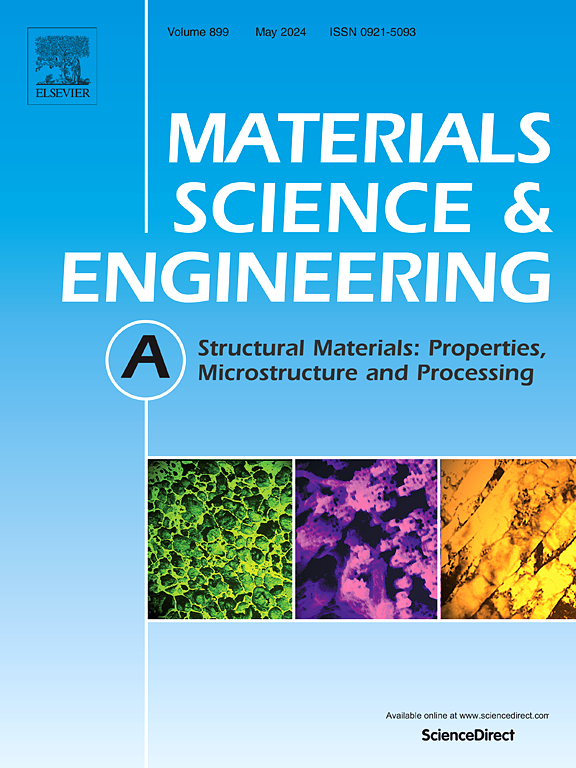New insights into microstructure evolution and deformation mechanisms in additively manufactured 316L stainless steel
IF 6.1
2区 材料科学
Q1 MATERIALS SCIENCE, MULTIDISCIPLINARY
引用次数: 0
Abstract
The evolution of the deformation micro-mechanisms and the dislocation structures in additively manufactured (AM) 316L steel was investigated via in-situ SEM/EBSD tensile tests coupled with fine TEM investigations at different strain levels. We show that the deformation mechanisms are strongly influenced by the initial dual-scale cellular structure, composed of large dislocation cells with chemically segregated cell walls, encapsulating smaller, chemically homogeneous internal regions. At low and medium strain levels, the primary deformation mode is dislocation slip across the dislocation cells interiors and formation of micro-bands while plastic deformation at higher strain is primarily controlled by mechanical nano-twins nucleated through the overlapping of stacking faults ribbons. Unlike conventional 316L, the AM 316L shows a nearly linear increase in dislocation density with increasing applied strain throughout the full range of plastic deformation. The initial cellular structure is preserved under plastic deformation, continuing to act as a barrier to dislocation glide and contributing to the high ductility of the AM 316L steel. A correlation between the work hardening rate and the observed deformation modes is evidenced, strengthening the conclusion that the plasticity of AM 316L is atypical. These findings enhance the understanding of the dislocation structures and the microstructure evolution during plastic deformation in AM 316L steel, providing valuable insights for the development of predictive large-scale plasticity models for these materials.

求助全文
约1分钟内获得全文
求助全文
来源期刊

Materials Science and Engineering: A
工程技术-材料科学:综合
CiteScore
11.50
自引率
15.60%
发文量
1811
审稿时长
31 days
期刊介绍:
Materials Science and Engineering A provides an international medium for the publication of theoretical and experimental studies related to the load-bearing capacity of materials as influenced by their basic properties, processing history, microstructure and operating environment. Appropriate submissions to Materials Science and Engineering A should include scientific and/or engineering factors which affect the microstructure - strength relationships of materials and report the changes to mechanical behavior.
 求助内容:
求助内容: 应助结果提醒方式:
应助结果提醒方式:


